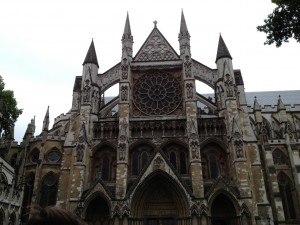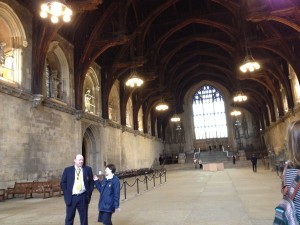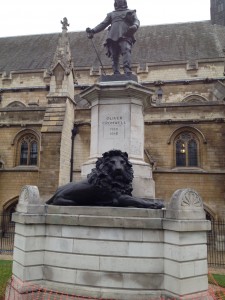The next class trip we made after the Tower of London was to Westminster. We started our day at Westminster Hall and then made our way over to the Abbey, which is pretty much the coolest thing in the world.
From several different perspectives, the Abbey is amazing. The only way I can think to explain what happened is to say that, In the beginning, Westminster Abbey started as a Benedictine monastery in 960. In 1065, Edward the Confessor moved in at Westminster Palace, saw the Abbey, and decided he wanted it as his own. That’s the quick explanation. It’s also a bad one, but…
The Abbey as it is now was built by Henry III in 1245, and the Gothic architecture is stunning.
But the really cool thing about it is that there are over 3000 people buried in and around the Abbey, including plague victims and soldiers who died in the World Wars. And of course monarchs, like Edward the Confessor himself, Henry VII, and a couple of Henry VIII’s wives.
There are so many memorials around the Abbey, but the coolest (non-royal) one is probably Isaac Newton’s, right in front of the choir. Another great aspect of the Abbey is the Poet’s Corner, which commemorates some of the greatest British poets and writers like Jane Austen, Percy Bysshe Shelley, and John Keats, though not everyone is actually buried at the Abbey.
We were also at the Abbey long enough that we got to attend Evensong if we wanted to, which was awesome.
Now, Westminster Hall is a large, extravagant hall built in 1097 by William II, with reconstruction beginning in the 1390s under Richard II. It’s so big that they needed other halls around the area to conduct everyday business in because Westminster was overkill. And besides, the very first act of official business to be conducted within the newly reconstructed Hall was Richard’s own deposition. Because that’s what happens when you make love, not war.
On a side note, Oliver Cromwell, who was involved in the assassination of Charles I, was originally buried in Westminster Abbey, but was later exhumed by Charles II to be put on trial for treason. His corpse was found guilty, and he and his conspirators were sentenced to hanging and beheading. Neither his body, nor his head remain at the Abbey, though there is a statue of him outside the Hall (because the English love to commemorate people who commit treason).



